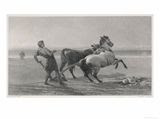What Is It?
The term, social bookmarking, describes a way of collecting, sharing, organizing, and managing data on the world wide web.
Earlier generations of people created libraries by buying books, keeping or loaning the ones they liked, and organizing their collections by favorite author, topic, etc. These yesteryear book collectors spent a great deal of time and effort locating specific books and manuscripts, and once a unique item was found, it belonged to just the one collector who discovered it. Today’s electronic readers have developed a way to collect useful or desired information contained on websites and have learned how to keep their favorite information sites easily organized through the use of social bookmarking.
Similar to regular internet bookmarking in the way it allows the reader to locate and save interesting sites to their own personal computers, social bookmarking has developed an enhanced way of sharing information with others by allowing the reader to insert unique id tags into all of their searches, and allowing users to organize those searches into collections which can then easily be shared with others. In this way, simply knowing another user’s ID allows access to their collections, which creates a dynamic, ever-evolving pool of data and information.
My Journey
I recently created my own account on Delicious.com, one of the original innovators of social bookmarking, and I was pleasantly surprised by how simple it was to use and how easy it made the process of sharing data files, simply by adding another user to your list. I would like to share some of the things I observed during my Delicious odyssey.
In my virgin foray into the wilds of social bookmarking, I selected sites that are of personal interest to me in the areas of design and communication. (One particularly enjoyable piece of information concerned the difference in trichromates and tetrachromates color detection ability - See 100 Million Colors , and be sure to take the Ishara vision test!). Although the navigation was a bit disorienting at first, I gradually realized that I was trying to find sites that would provide personal illumination, rather than sites that might be of interest to others. In this way, it is easy to see how social bookmarking can serve as personal self-directed study tutorials, although the aspect of sharing is probably the most important quality social bookmarking brings to the table.
and Cons of Social Bookmarking
In my recent bookmarking experience, using Delicious was a positive experience as it allowed me to get a better idea of the popularity of various specialized sites, saved time in bookmarking sites I would like to explore in more detail and gave me a better sense of organization for my saved content.
On the more cautious side, using Delicious, and being aware that others would be able to view my bookmarks created an added awareness of the perceived value of certain of my choices, as I considered the worth of my choices as they might be perceived by others with similar interests. As I navigated the Delicious site and learned more about social bookmarking, I found myself considering the working applications of the idea behind the term folksonomy. Folksonomy, a way of tagging information with a user name or title, is both the blessing and curse of social bookmarking because it gives the user a powerful tool for organizing data without a firm structure or naming classification schema.
In his podcast on Web 2.0 for Designers, educator Ken Ronkowitz compares the folksonomy naming techniques to those used in science, but unlike the scientific principles behind taxonomy classification, folksonomies in social bookmarking have little recognizable guidelines, order or hierarchy, other than that given to each tag by individual users. This contradiction in tagging highlights the need for social bookmarking sites to adopt a modern web version of content tagging similar to the Dewey Decimal System type of classification. This could help reduce the chaos and disorder of misspelled or incompletely labeled information, at the same time that it promotes and enhances a new level of shared group communication.
This brings me to what I consider to be the most exciting aspect of social bookmarking, which is the potential it holds to become a valuable tool in building a "mega-brain" of smart data sources for personal and public use. As new content is created daily by users and added to existing information on the web, special interest groups are developing wholly original repositories of data, a veritable treasure trove of research material, scholarly writings and teachings on a myriad of subjects.
According to some sources, the enormous ancient Egyptian Library of Alexandria , known even today for the valuable contribution it made to the education of the world, grew so large because each visitor to the city was required to surrender any book or manuscript they carried over to the Royal Archives to be copied before they could resume their journey.
Social bookmarking may represent the first foundation stone in a medium that may someday assume the virtual equivalency of the ancient Library of Alexandria, in terms of the wideness of its scope and the influence it may play in the future of the virtual education of its contributors.
Library of Alexandria reproduction
Common Terms in Social Bookmarking
- A structured classification system created by a user or user group.
- A website design that uses a means of organization to manage and control data changes on the web.
- A reciprocal connection between websites.
- Keyword(s) used to that is associated with a given piece of data.
- A term used to describe web applications and sites that enable users to readily share and exchange information on the W3.



Where/what is your delicious account?
ReplyDelete